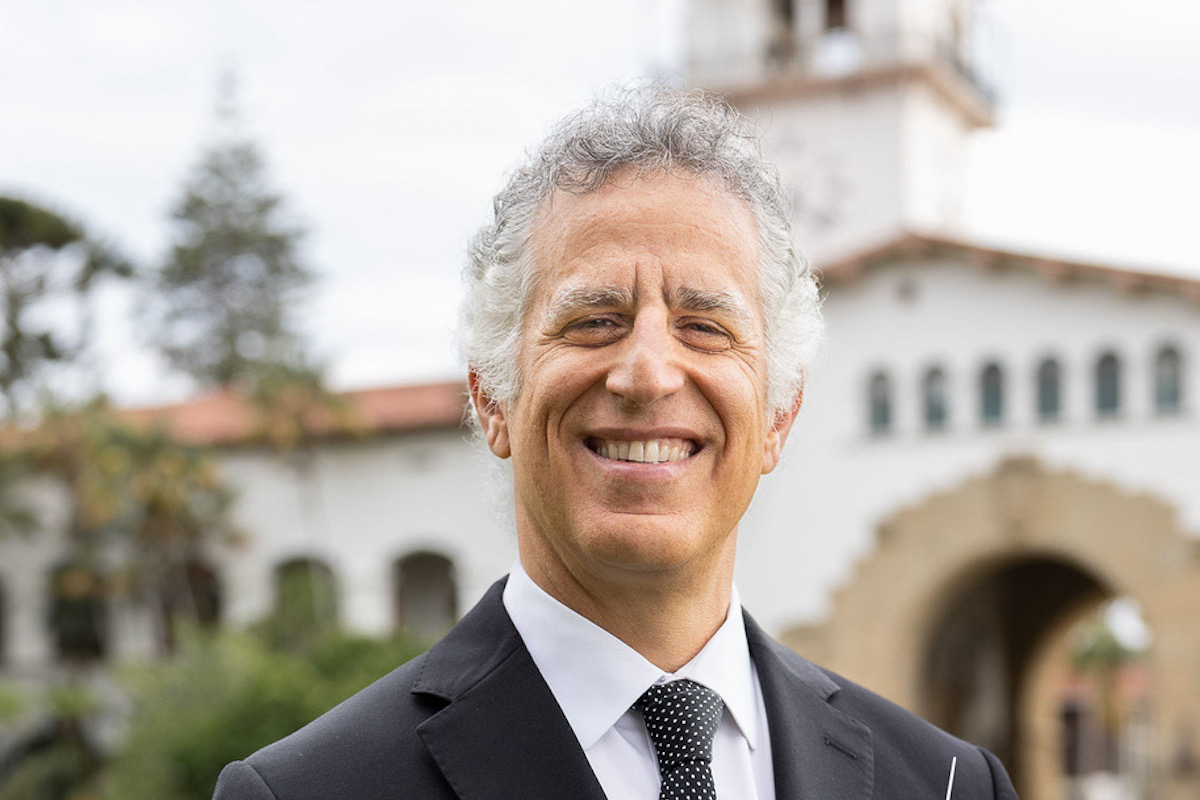ON the Beat | Of Beethoven and Boleros, the Weekend that Was
Last Weekend, the Santa Barbara Symphony Toasted Beethoven and Tres Soul Bared its Bolero Soul

Last weekend’s Beethoven blowout at the Granada found the Santa Barbara Symphony (SBS) weighing in, with boldness and precision, on the power of fours. In the concert’s first half, we were served up a grand reading of Beethoven’s Piano Concerto No. 4 — featuring a sublime soloist turn by Ukrainian-American pianist Inna Faliks — while the second half was devoted to Beethoven Symphony No. 4, a too-rarely performed delight from the roster of nine symphonic jewels. The odd piece out on this program dubbed Beethoven Dreams was Israeli composer Ella Milch-Sheriff’s strange quirk of a piece The Eternal Stranger in its West Coast premiere here. Based on a letter from Beethoven to his friend, recounting a distressing dream that took the composer wandering through various lands, Odyssey-style, before ending up in Jerusalem, the piece may hold intrigue on its own merits, but it felt out of place, especially in musical terms, on this Beethoven-enriched program.
A poetic text, dramatically delivered by actors John P. Connolly and Nitya Vidyasagar (and directed by Ensemble Theater Company head Jonathan Fox), roamed the thematic turf of alienation and displacement, while the musical score roamed a fuzzy-focused language of vaguely Middle Eastern tonalities and sprigs of Stravinsky-isms. Composer Milch-Sheriff had the unfair disadvantage of comparison with the German master centering the evening.
Still, the endeavor was a noble gesture and concept on the symphony’s part, striving to explore symphonic ventures beyond the pale, while also continuing a collaborative relationship with Ensemble Theater Company, now up to its fifth interactive project.
One distinguishing part of this program, not to mention a mark of historical continuity, came in the form of masterful and mischievous violinist Gilles Apap, sitting in concertmaster role. The globe-trotting violinist, based in Arroyo Grande, has been an SBS concertmaster as well as featured soloist dating back to the ’90s, during the memorable conductor tenure of Gisele Ben-Dor.
This orchestra’s Beethoven soared and soothed, to suit, under maestro Nir Kabaretti’s firm yet flexible guidance. On the piano concerto, the orchestra struck a felicitous accord with pianist Faliks, whose potent performance favored nuance and restrained dynamism over excessive flash.
Yet more impressive was the orchestra’s insight and sonorous approach to the Fourth Symphony, the Saturday-night performance of which qualified as one of the high points of the SBS season. Some of the credit for the aural freshness of the experience goes to the undeserved, relative obscurity of this symphony. The score has an early Beethoven lightness and gentility, still bearing elements of his seminal Haydn influence, contrasting his deeper dives into the gravitas of the preceding Third (“Eroica”) and his formidable Fifth Symphony. This calm-before-the-Beethovenian-storm opus irradiated the Granada with subtle symphonic majesty, with just the right pitch and emotional hue.
Blame It on the Bolero

One of the semi-secret treasures — and one of the greatest free-to-the-public treats — on the Santa Barbara cultural calendar is the ¡Viva el Arte de Santa Bárbara! series, launched in 2006 and going strong after the pandemic pause. Prime cuts of Mexican regional music and other traditions from Latin America are duly celebrated in the form of residencies involving educational outreach and public performance in Isla Vista, Guadalupe, and the Marjorie Luke Theatre as a Sunday-evening capper.
Last week’s special occasion was one of those retro-refreshing sensations, courtesy of the bolero-steeped, Los Angeles–based Tres Souls. Sunday evening at the Luke, the ace triumvirate of vocalist Rocio Mendoza, guitarist Roberto Carlos, and dazzling requinto player Jesus Martinez (joined here by bassist Ray Gudiño and percussionist Ishmael Pineda) delivered a potent hour-long tribute to the timeless beauty of the bolero, birthed in Cuba in the late 19th century and popularized through Mexican cinema in the 1940s-1960s.
The evening proved to be a transfixing and transporting experience to hear impeccable versions of such classics as “Sabor a Mí,” “La Luna Eres Tu” and “Cuando Vuelva a Tu Lado” — the 1934 song turned into the English language hit “What a Difference a Day Makes” by Dinah Washington. This is no dry preservationist project: Tres Souls respects a specific historic niche and brings it fully to life, before our ears and dancing feet.
Not to miss alert: This season’s ¡Viva el Arte de Santa Bárbara! closes with the famed and multi-culturally fabulous Las Cafeteras, May 19-21.
To-Doings:

Globally renowned German violinist Augustin Hadelich has, thankfully, become a repeat visitor to Santa Barbara, through the auspices of CAMA and also the Music Academy. He returns for a special solo recital at the Lobero Theatre on Monday, April 24, closing out this season’s CAMA Masterseries. The program is framed by Bach’s Partitas, surrounding African-American composer Coleridge-Taylor Perkinson’s Blue/s Forms and the violin virtuoso stuff of Eugène Ysaÿe.
Speaking of free events worth checking out, consider A Night of Visual Music, at Community Arts Workshop tonight (April 20) at 8 p.m., a performance of avant-garde audio-visual works organized by the new UCSB’s Corwin Chair head, João Pedro Oliveira.




You must be logged in to post a comment.